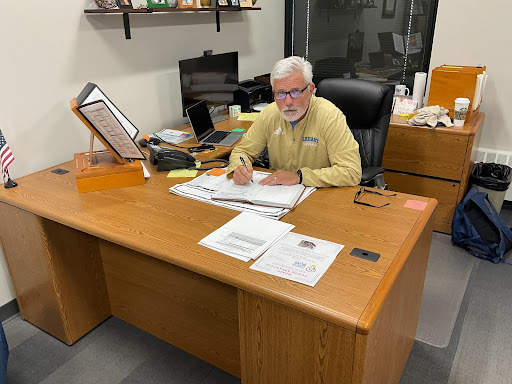Newly, Indiana underwent a sequence of harsh storms that caused substantial uproar across the state.
These storms, illustrated by hefty rainfall, strong winds, and even tornadoes in some areas, have left several communities wrestling with the aftermath. There have been multiple reports of significant damage in Elkhart and Osceola, as well as St. Joseph and Marshall counties in Indiana. Trees had fallen, electricity was cut, and citizens were struggling with property damage. The results of these weather conditions can be profound, affecting not only the physical attributes of the environment but also the lives of residents. EHS Librarian Colleen Shook can attest to this firsthand, saying, “My trampoline somehow ended up in the trees!” Students and staff have been concerned as to how these constant storms and changes in weather are going to continuously affect their lives overall.
In the wake of these storms, individuals can encounter various challenges, including property damage, power outages, and disrupted access to essential services. Flooding can and has led to road closures and can certainly make it challenging for emergency services to reach those in need of assistance. Further, the vigorous toll that individuals and families deal with can be considerable, as they deal with the stress of recovery and the uncertainty of future weather conditions.
 To take caution during storms, residents must stay informed by monitoring local weather reports and alerts. Preparing an emergency kit with fundamental supplies, including food, water, medications, and first aid items, can be lifesaving. According to Indiana Michigan Power, “Planned or unexpected, a power outage can last for days or longer and may impact every-day needs like lighting, heating, cooling, communication, food and medicine refrigeration, and cooking and medical equipment. Plan now to have what you need and to know how to stay safe.” Creating a family communication plan guarantees everyone will know what to do and where to go to be safe during cases of severe weather emergencies.
To take caution during storms, residents must stay informed by monitoring local weather reports and alerts. Preparing an emergency kit with fundamental supplies, including food, water, medications, and first aid items, can be lifesaving. According to Indiana Michigan Power, “Planned or unexpected, a power outage can last for days or longer and may impact every-day needs like lighting, heating, cooling, communication, food and medicine refrigeration, and cooking and medical equipment. Plan now to have what you need and to know how to stay safe.” Creating a family communication plan guarantees everyone will know what to do and where to go to be safe during cases of severe weather emergencies.
“As for precautions people should take, there’s few,” notes budding meteorologist Junior Ian Kelly. “Pre-determine beforehand a safe place—a room away from windows or doors on the lowest floor of a building—for you to go to in case of storms. Another good thing to have is a NOAA Weather Radio that makes sounds to alert you in case of watches or warnings.” Lastly, securing property by trimming trees, reinforcing roofs, and clearing gutters can help minimize damage during future storms.
These recent storms throughout Indiana are a great reminder of the unpredictability of nature and the significance of being prepared. By taking foreseeing steps, societies and individuals can protect themselves far better and their homes from severe weather in the future.




















